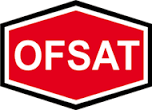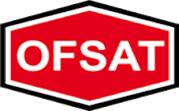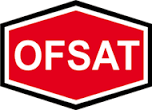Title Page
-
Carried out by:
-
Designation
-
Add location
-
Rig No:
-
Date of Rig Observation
-
RMS/RMF
-
Weather Conditions
Section 1 - Communication
-
Work Instruction/Toolbox Talks/Reflective Learnings
-
PDO Second Alerts/ HSE Flash
-
Work Stoppages
-
Super Wednesday
-
10 Q’s for Safe lift
Section 2 - Pre Rig
-
Has there been a pre rig move meeting held and the documentation signed by the DSV, TP, RMS and a copy held with the RMS
-
Are overhead line electrical certificates required and copy with RMS
-
Does the RMS have copies of Rig move risk assessments
-
Has a pre rig move route survey been completed in colour and appendix 14 completed and are they available with the RMS
-
Do all personnel have the correct training? E.g. riggers banksman, H2s, crane, FLT, lifting supervisor
-
Does the RMS have copies of Rig move procedure
-
Have all vehicle drivers been provided with a colour copy of the rig move route survey
Section 3 - Lifting winching & Plant
-
Does the RMS have copies of winching procedures
-
Safe lifting operations - Wind speed, positioning of personnel, tag lines, suspended loads, visibility
-
Safe winching operations - positioning of personnel - Winch has a Ferrell
-
Load conditions are checked before lifting
-
Are lift plans available for all lifts
-
Are all lifting equipment and accessories serviceable (e.g. Colour coded, inspected)
-
Load dimensions are clearly marked and meet requirements
-
Banksman identified
-
Lifting and winching operations adequately supervised
-
Daily vehicle checks completed
-
Daily FLT and crane checks completed
-
All vehicles have valid RAS, service and Mulkiya
-
7 day crane functionality tests completed
-
Winch operators are visually checking the winch clutch for engagement
Section 4 - PPE & Safety Equipment
-
Impact Gloves
-
Gloves
-
Hard Hats/Bump Caps
-
Eye Protection
-
Ear Protection
-
Coveralls
-
Safety Footwear
-
Hi Viz vest
-
Face/Dust Mask
-
H2S equipment as required (escape Hoods & Monitors)
-
Are there adequate first aid provisions
-
Do all vehicles have valid fire extinguishers
-
Does the contractor have hands off tools available and are they being used
Section 5 - Supervision
-
New location checked by RMS before vehicles are allowed to enter
-
Safe control of work at height
-
Traffic managed at rig site (speed/organised called on to pad as required)
-
OHL controlled at crossing / on close to rig pad (isolated, barriers in place)
-
Load security checked by supervisors before leaving location
-
Single running loads managed
-
Do supervisors have suitable means of communication with senior management
Section 6 - Load Security
-
Drivers aware of correct load lashing inspections during journey
-
Correct load security equipment available and in good condition
-
Loads secured in on skids, loads secured on vehicles (4 chains for skids, twist locks for shipping containers, 2 chains for cable drums, no chains for pipe etc.)
-
All loads seen are they adequately secured
Section 7 - Convoy
-
Escort vehicles have the correct equipment, flashing/rotating beacon, communication arrangements
-
Convoy speeds/ procedures followed note check for distances between convoy vehicles are maintained correctly
-
Are all ODC loads assigned to convoys
-
Pre Convoy TBT meeting held
Section 8 - Welfare
-
Toilets and wash facilities, working condition, soap available, hand drying available, cleanliness
-
Refreshment/Rest area, drinking water and cups available, cleanliness, shaded area etc
-
Summer time working is managed and temperatures are monitored









